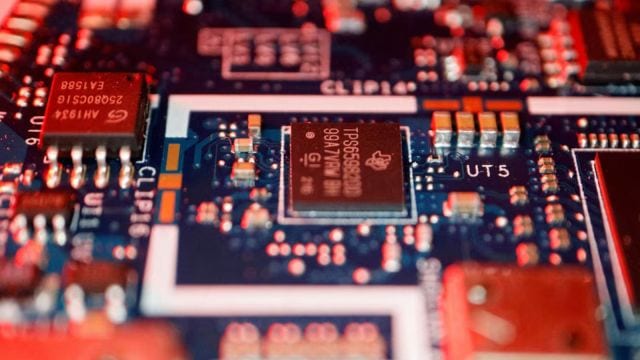
The recent US decision to ease export restrictions on Electronic Design Automation (EDA) software to China represents a significant shift in the global semiconductor landscape. While this development may appear to benefit Chinese chip manufacturers, the implications for India’s semiconductor ambitions are far more complex and potentially transformative.
In May 2025, the Trump administration initially imposed stringent controls on EDA software exports to China, requiring licences for the sale of critical chip design tools from companies like Cadence, Synopsys and Siemens. However, just weeks later, the US government reversed course, lifting these export restrictions as part of a broader bilateral agreement. This reversal, negotiated during talks in London in June 2025, saw the US agree to lift export restrictions on chip design software in exchange for China’s commitment to approve exports of rare earth elements to the US.
For India, this development arrives at a crucial juncture in its semiconductor journey. The country has been aggressively pursuing semiconductor self-reliance through its India Semiconductor Mission, which offers up to 50 per cent fiscal support for approved semiconductor fabrication projects. The government’s Design-linked Incentive (DLI) scheme provides matching investment support to accelerate the development of India’s semiconductor design ecosystem. With Prime Minister Modi recently launching three semiconductor plants valued at over $15 billion, India is clearly positioning itself as a major player in global semiconductor manufacturing.
On one hand, it removes a temporary competitive advantage that Indian semiconductor companies might have enjoyed while Chinese firms faced technology access limitations. Chinese companies can now resume full access to cutting-edge EDA tools, potentially accelerating their chip design capabilities and market competitiveness. This could intensify competition in global semiconductor markets where Indian companies are seeking to establish themselves.
However, the broader implications may actually favour India’s long-term semiconductor strategy. The rapid reversal of export restrictions demonstrates the volatile nature of technology trade policies and the risks of over-dependence on any single market or technology provider. This uncertainty is likely to drive multinational semiconductor companies to diversify their operations and supply chains more aggressively, creating opportunities for India as a stable, democratic alternative.
Indian semiconductor entities are already showing promising signs of growth in this environment. The country’s semiconductor market, valued at $35.18 billion in 2023, is expected to grow at a remarkable 27.2 per cent CAGR through 2030. Tata Electronics has signed strategic partnerships with Tokyo Electron for equipment and services, focusing on workforce training and R&D enhancement. These developments demonstrate India’s commitment to building a comprehensive semiconductor ecosystem that extends beyond mere manufacturing to include design capabilities.
The EDA restrictions episode also highlights the critical importance of developing indigenous capabilities. While the immediate restrictions have been lifted, the fact that they were imposed at all underscores the vulnerability of any country dependent on foreign technology tools. India’s semiconductor ambitions must include developing domestic EDA tools and capabilities to ensure long-term strategic autonomy. The country should view this as an opportunity to accelerate investments in indigenous semiconductor design software and tools.
The geopolitical dynamics surrounding semiconductor technology also present India with unique advantages. As tensions between the US and China continue to shape global technology trade, India’s position as a trusted partner for democratic nations becomes increasingly valuable. The country’s participation in initiatives like the Quad’s semiconductor partnership and its growing ties with Taiwan, South Korea, and Japan position it well to benefit from the ongoing realignment in global semiconductor supply chains.
For Indian semiconductor companies, the current environment offers several strategic opportunities. First, the uncertainty around US-China technology trade is likely to drive demand for supply chain diversification, potentially benefiting Indian firms. Second, multinational corporations seeking to reduce their dependence on Chinese suppliers may be more willing to invest in Indian capabilities and partnerships. Third, the focus on supply chain resilience may lead to premium pricing for trusted alternatives, potentially improving margins for Indian companies.
The Indian government’s response to these developments will be crucial. Beyond the existing financial incentives, India needs to invest heavily in semiconductor education, research infrastructure, and indigenous technology development. The country should also consider establishing its own EDA development programmes, possibly through public-private partnerships or in collaboration with allied nations. The recent policy volatility should serve as a catalyst for India to accelerate its domestic semiconductor capabilities.
Looking ahead, the semiconductor industry’s future will likely be characterised by continued geopolitical tensions and policy volatility. The rapid reversal of EDA restrictions suggests that technology trade policies may become increasingly transactional and subject to broader diplomatic negotiations. For India, this environment of uncertainty creates opportunities to position itself as a stable, reliable partner for global semiconductor companies seeking to diversify their operations.
The challenge for India is to leverage this opportunity while building sufficient indigenous capabilities to avoid dependence on any single country or technology provider. Success will require sustained government support, strategic international partnerships, and a commitment to developing comprehensive domestic semiconductor capabilities across the entire value chain.
The recent EDA restrictions episode may ultimately prove to be a catalyst for India’s semiconductor ambitions, highlighting both the opportunities and risks in the current global technology landscape. With the right policies and investments, India can emerge as a major beneficiary of the ongoing restructuring of global semiconductor supply chains, transforming from a chip importer to a trusted global semiconductor partner.
The writer, a defence and cyber security analyst, is former country head of General Dynamics